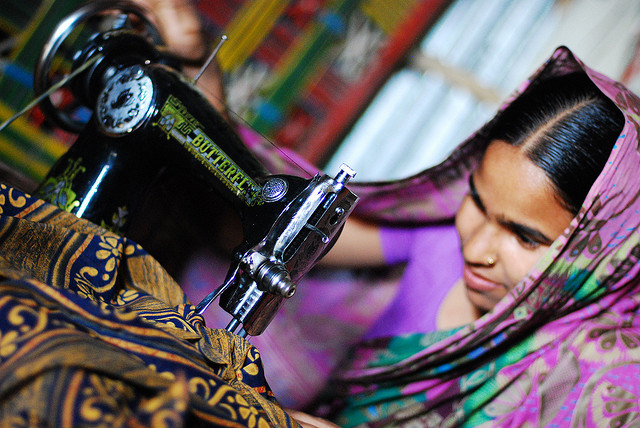Microfinance refers to investment of small sums of money to people in need of it. Peer-to-Peer (P2P) lending in microfinance refers to lending directly to borrower. P2P lending is a relatively new tool of microfinance in India. However, it already has substantial presence worldwide.
While Microfinance Institutions (MFIs) invests into these micro loans in addition to maybe facilitating such investments by individuals. Marketplaces only facilitate P2P transactions between individuals. Reputed P2P microfinance marketplaces, such as the Lending Club, distributed loans worth $2.42 billion in 2013 up 177% from 2012. While Rangde, one of India’s more famous marketplace, was launched in 2008, P2P lending collapsed in India in 2010 after the failure of SKS, an Indian microfinance institution. It only revived after the advent of Kiva, world’s largest MFI for social micro lending, in India on August 2012. A lot of similar Indian websites (to which the aforementioned limitation does not apply) have since come into existence that includes Milaap, i-lend, and micrograam.
Difference between Kiva and the Rest
The main regulatory difference between a MFI and a market place in India is that the former is a financial institution and comes under the RBI while the RBI does not have authority over a marketplace like i-lend or rangde since it only facilitates lending between a borrower and a lender and does not operate as a finance institution. Kiva is therefore under RBIs jurisdiction while marketplaces like Rangde and i-lead are not.
Kiva, a non-profit MFI, offers loans to borrows at 0% interest and collects no fee for facilitation from either the lender or the borrower. Kiva is entirely a social enterprise and runs mostly on grants, donations and loans from institutions, individuals or nations. Built for similar purpose of social upliftment, marketplaces, like Rangde, typically charge the borrower 8.5% interest on a loan out of which 2% is returned to the investor and 1.5% is kept with Rangde.
These marketplaces thus charge a substantial fee without any financial capital or financial risk undertaking. Financial risk undertaking is important for there is significant risk of default in microfinance industry as the loans are unsecured. The creditworthiness check of a borrower is done completely by the marketplace.
One can still appreciate the fact that Rangde provides credit at 8.5% interest in rural as opposed to the 100% – 1000% by moneylenders. However, to attract investors, for increasing the loan capital, sites like i-lend, a self-proclaimed social venture, offer high interest rates starting from around 15% and can extend upto 24%. I-lend alsochargesborrowers 3% of the loan amount (or Rs.1,000 whichever is higher) and investors (1.5% of the investment amount or Rs.750, whichever is higher). This increases the effective interest rate for the borrower by a minimum of 3-4%.
Further, i-lend allows the lender to sue the borrower and on behalf of the lender can employ “collection agents”. The relevant clause in the agreement is given below:
“i-lend on behalf of Investor will take such necessary steps as permitted by law against the borrower to realize the amounts due along with the interest at the decided rate and other fees / costs as agreed in this Agreement including appointment of collection agents, appointment of attorneys/ consultants, as it thinks fit.”
Microfinance and Poverty
Microfinance and its effect on poverty have been questioned recently by a recent study in India by MIT economists. The results were shocking as the study found little direct effect of micro financing and alleviation of poverty. According to the study:
“…mistake that the microcredit enthusiasts may have made is to overestimate the potential of businesses for the poor, both as a source of revenue and as a means of empowerment for their female owners.”
This is because these borrowers lack the technical skill or expertize required to start a sustainable profit making business. Even if successful, the business does not generate enough revenue to draw them above the poverty line. Therefore, there has not been a significant direct impact from microfinancing.
For a rural borrower, microcredit is the only alternative to moneylenders. This places microfinance institutions, which offer microcredit, in a delicate position with power to exploit a rural borrower. As the microfinance shifts to private industry, goals of social upliftment are come in conflict with profit maximizing. Therefore, it is difficult for a for-profit MFI to manage the interest of the investors for better returns and still promote social causes. Often these MFIs end up charging an exorbitant interest rate and employing “collection agents” who end up coercing the rural borrower into payment. Compartamos Banco, a Mexican MFI, charges around 86%, much more than it needs to cover its costs. Similar trends have been seen in India with SKS finance allegedly being responsible for the suicide of farmers in Andhra due to inability to pay loans. Further, there has been a global increase in average interest rates. This has further diluted the social impact of these ventures and turned them into profit making enterprises, which now simply retain the garb of being social entrepreneurs in order to attract sympathetic investors.
Microfinance is nevertheless a powerful social and investment tool but the problem lies in the current unregulated scenario. The absence of a regulatory authority gives these marketplaces, which aren’t even Micro Finance Institutions (MFIs), freehand to charge exorbitant transaction rates under the guise of social entrepreneurship. Therefore there is an urgent need of intervention and protection by the Government. The delay in the micro finance bill will only aggravate these problems.
 Serato DJ Crack 2025Serato DJ PRO Crack
Serato DJ Crack 2025Serato DJ PRO Crack








 Allow notifications
Allow notifications



